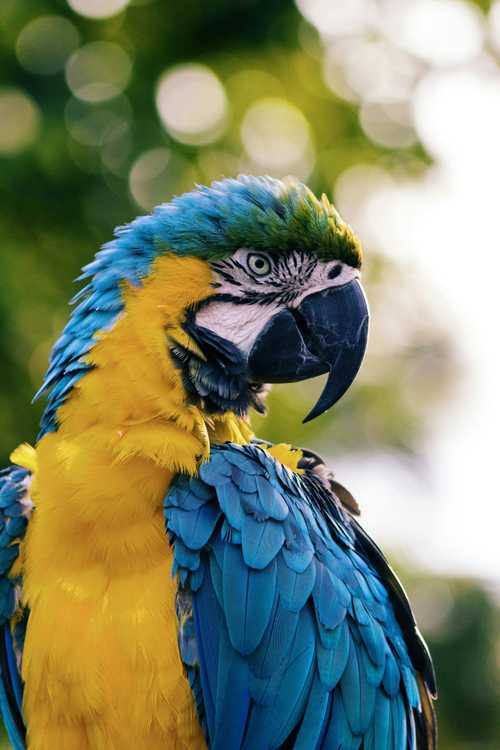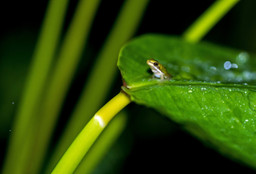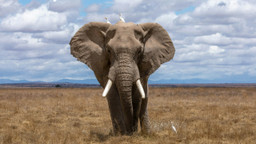
David Attenborough’s new series – the extremely earth.fm-appropriate Secret World of Sound, which we recently previewed – has now been broadcast in full on UK television.
Across more than 70 years, Attenborough has made programmes about natural-history subjects including evolution, fossils, animal behavior, plants, birds, the climate crisis, the biological origins of music-making, invertebrates, global warming, amphibians and reptiles, the origin of life on Earth, vertebrates, bioluminescence, and color in the animal kingdom (to name a select few). Now, despite rapidly approaching his 98th birthday, he has turned his attention to sound and its multiple functions within the natural world, where it can be a “key to survival”.
Episodes focus on its importance for ‘Hunters and Hunted’, and in relation to ‘Love and Rivals’ and growing up (‘Finding a Voice’). While these might sound like simplistic categorizations, in practise it’s astonishing to be presented with such diverse examples, from lions roaming their 150 sq mile (241 km²) territory in order to assert their dominance with a vocal display which can be heard for five miles (8 km), to bees using the vibrations from their flight muscles to release pollen from certain flowers (via ‘buzz pollination’), or bottlenose dolphins emitting bursts of high-frequency clicks to echolocate fish hidden in a sandy seabed.

That sound “can make the difference between life and death” is driven home by sequences showing nocturnal kangaroo rats in the dark of the Arizona desert driving away predatory snakes by drumming on the ground with their large hind feet, while elephants are able to locate water by sensing the low-frequency vibrations of thunder through the pads of their feet, allowing them to navigate towards possible rainfall in drought-struck Kenya. Or, in a slightly grotesque inversion, earthworms below the ground are shown being undone by their natural inclination to rise to the surface when they sense the vibrations caused by falling rain – except sometimes there is no rain, just gulls paddling the ground with their feet to create the same effect and earn an easy meal.
As ever, with his palpable enthusiasm undimmed by age in a few on-screen appearances, Attenborough presents information with a clarity which is neither patronizing nor bogged down in technicalities. For example, when discussing sound in relation to mating, his lightness of touch allows him to concisely sketch a sense of the existential importance that these situations have for their participants. Who among us has ever really considered the thought processes underpinning sex between toads? Yet we’re suddenly confronted with nature’s ingenuity when a female plains spadefoot toad ignores the copious males of its own species and instead mates with a Mexican spadefoot. While this might seem like a case of mistaken identity (or an inter-species kink), and though only female hybrids of this type will be fertile, these tadpoles will develop more quickly than their plains equivalents: a valuable strategic choice when it’s a only a matter of time before your Arizona desert pond dries up in temperatures exceeding 104 °F (40 °C).
Initially similarly baffling is an eerie humming emanating from the waters of North America’s Pacific coast – in fact, a call produced by male plainfin midshipmen, who find and prepare a suitable nest site in which their female partners can lay their eggs, before attracting them from the open ocean with a sound like a 110 decibel “chorus of kazoos, B-29s flying in formation” or “an orchestra full of mournful, rasping oboes”. Different harmonics – a “sonic fingerprint” – enable the females to locate their specific mate.
In some cases, animals’ calls can’t be heard by the human ear – but don’t imagine that that makes them less interesting. The ‘seismic communication’ of treehoppers, which can be transmitted throughout the plant on which they sit, allows males and females to alert one another of their presence (and location). These communications can be made audible with a laser vibrometer, which can pick up and amplify vibrations on the surface of an object. In the brief making-of segment which ends the relevant episode, Dr Rex Cocroft, a biologist who has become fascinated by different treehopper species’ styles of communication, entertainingly describes examples which sound like “a tap-dancing monkey”, “an owl laughing at its own joke”, and “a woodpecker followed by a tiny honking car”.
The series’ final episode details the ways that “baby animals use sound to stay alive in a world where the odds are stacked against them”, with meerkat pups having to vocally beg adults for food (who themselves use a complex system of predator-specific alarm calls to warn their clan of danger), and caiman hatchlings, buried in an earthen nest, using pulsing squeaks from within their eggs to coordinate a mass hatching, before honking simultaneously to maximize the likelihood of their waiting mother hearing them and digging them free. Less heart-warmingly, we also see a beehive’s first-to-hatch queen using ‘toots’ to compel her subjects to not release her royal rivals.

These examples only scratch the surface of the great variety of sonic strategies presented by the series. Other highlights include a great gray owl, with hearing so acute that it can pinpoint voles moving under the snowy landscapes of Manitoba, Canada; a disturbingly violent night-vision battle between a pride of lions and a chattering, whooping clan of hyenas out to steal their kill; the contemporary dance and “resonant cooing” of male sharp-tailed grouse performing a lek for a female; clown fish policing their size-based hierarchy through grunts and pops; and the uncanny mimicry of the superb lyrebird, which can learn more than 20 other species’ calls (and even replicate car alarms and the sounds of camera shutters and crying babies).
However, despite this marvelous array of behaviors and environments, it would be remiss to overlook the criticism that Attenborough (and nature documentaries more generally) peddle an idealized vision of the natural world, one in which humanity is conspicuous by its absence. A Bangkok Post review of an earlier series, 2021’s Life in Colour, is typical when it states that, “One pivotal issue that [Attenborough] fails to mention is the ongoing climate crisis or for that matter the irreversible damage humans have done to the habitats of the filmed critters”, and that the series “should be more than a celebration of our awesome animal kingdom, it should encourage discussion on how to stop the extinction of exotic animals due to human exploitation”.
It’s, arguably, a fair comment – though there is also a joy to getting to visit, however briefly, a natural world free from the presence of humans – but Secret World doesn’t buck the trend for only showing us and our trappings sparingly. Similarly sparing are the moments when Attenborough does address these “pivotal issue[s]” – though they are deployed with notable directness, for example when plainly stating that pollinators, their “numbers plummeting”, urgently require our help. However, Attenborough doesn’t steer away from his conscious choice to present the natural world in all its glory, diversity, ingenuity, strangeness, and beauty, rather than centering its threats.

Prioritizing what makes the natural world so extraordinarily precious has encouraged generations of people to fall in love with it, no doubt with the tangible outcome of having those people take action to help save it. Attenborough is on record saying that negative messaging could become a “turn-off” for viewers, and it’s hard to believe that those generations of audiences would have felt such a connection to his series, and the world they foreground, had they been faced with an unremitting cavalcade of bad news. Much media coverage suggests, whether deliberately or otherwise, that the natural world is a lost cause which we have no hope of saving – potentially with the counterproductive outcome of itself making that outcome more likely.
Secret World tells us that 200,000 species “sing in ways that are silent to us” – that is, more species than those we can hear. Even a statistic this simple – yet seductive – demonstrates the pull that a popular medium like nature documentaries can have; we can only hope that, somewhere, that fact has become etched into the mind of a child who may grow up and research, support, and protect those species for future generations to listen to.
In the UK, you can watch the series on demand via Now’s £9.99-per-month ‘Entertainment Membership’. No US broadcast has been scheduled at the time of writing.
Featured photo by Andrew Pons on Unsplash
Earth.fm is a completely free streaming service of 1000+ nature sounds from around the world, offering natural soundscapes and guided meditations for people who wish to listen to nature, relax, and become more connected. Launched in 2022, Earth.fm is a non-profit and a 1% for the Planet Environmental Partner.
Check out our recordings of nature ambience from sound recordists and artists spanning the globe, our thematic playlists of immersive soundscapes and our Wind Is the Original Radio podcast.
You can join the Earth.fm family by signing up for our newsletter of weekly inspiration for your precious ears, or become a member to enjoy the extra Earth.fm features and goodies and support us on our mission.
Subscription fees contribute to growing our library of authentic nature sounds, research into topics like noise pollution and the connection between nature and mental wellbeing, as well as funding grants that support emerging nature sound recordists from underprivileged communities.

